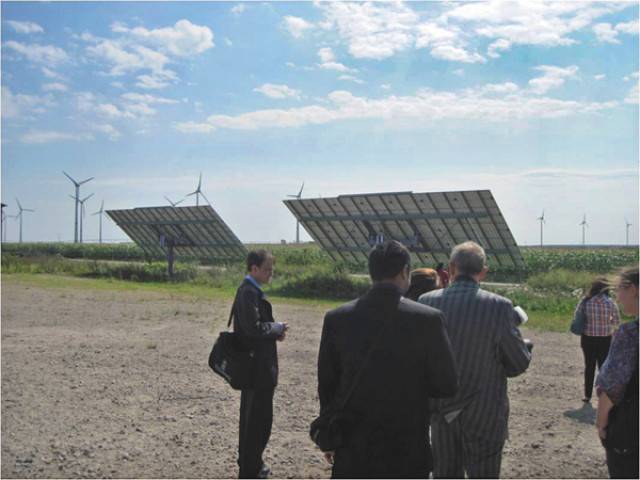Karachi has the potential to explore all renewable energy sources
Vast expanses of land in Gadap, other peripheries can provide space to establish wind and solar parks.

In a city like Karachi where energy consumption is always increasing, there is plenty of renewable energy consumption potential if there are long-term strategies in place. PHOTOS: FARHAN ANWAR
In Pakistan, some movement is visible on this front but, as always the approach is ‘project-oriented’ rather than going for a long-term strategy. If this initiative is to be planted on the right path then reference can be made to the recently launched ‘Energy Turn Around’ programme in Germany, which aims to convert renewable energy sources to the extent of 66 per cent by the year 2050. Only 10 years ago, renewable energy resources produced just over six per cent of electricity in Germany.

The transition is to be coupled with more efficient use of energy and cutting greenhouse gas emissions. This ambitious drive is based on finding answers to three simple questions - where we are today, where do we want to be in 2050, and how do we get there.
For example, while charting a pathway for 100 per cent renewable energy use in a summary by the German Advisory Council, a portfolio of renewable energies for cost effectiveness was calculated in different scenarios. It was found that wind energy, particularly off-shore wind energy, will assume paramount importance by 2050. The level of solar-energy use varied depending on energy demand. The share of biomass use in energy production did not exceed seven per cent, mainly owing to possible land-use conflicts and the relatively high cost of this resource.
No doubt Germany is far more advanced technologically than Pakistan and the context there much more favourable. Nevertheless, it is the ‘pathway’ and the process that we need to focus on. We may set less ambitious targets but the roadmap needs to be appropriate.
Now let’s take the case of Karachi - a city with an ever-increasing energy consumption profile. If we only look at the automobile load, it is ever-increasing with more emphasis on the use of private vehicles. But then Karachi is also full of exciting potential to accommodate the use of all forms of renewable energy sources - wind, solar, bio-mass, geothermal. All options are on the table. The vast expanses of land in Gadap and other peripheries can provide space to establish wind and solar parks, if we look for a city-level intervention.

source: The preliminary study of urbanisation, fossil fuels consumptions and CO2 emission in Karachi - SH Sajjad, N Blond, a clappier, Asif Raza, Safdar Ali Shirazi and Khadija Shakrullah, African journal of biotechnology volume 9.
Karachi also has an advantage that the power utility is privately-run and it can be much easier to facilitate a process to connect stored renewable energy in the grid system. In Germany, power production and distribution is managed by four private sector companies that have developed innovative partnership models with the government, consumers and other private sector concerns. The use of wind and solar energy for multiple application modes can also be done at household, neighbourhood and housing-society levels.
Karachi can benefit from offshore wind mills, taking into account the relevant environmental considerations.
The capital investment and maintenance cost for this can be high but can be offset when energy is produced at a large scale in the long run. The Ghoro-Keti Bandar Wind Corridor, spreading 60 km along Sindh’s coastline and more than 170 km deep towards land, has the potential to generate more than 60,000MW of electricity from which Karachi can also benefit.
Geothermal power is also considered sustainable because the heat extraction is small compared to the earth’s heat content. Manghopir has hot sulphur springs that can be assessed for geothermal energy. Then the vast agricultural landscape in Karachi offers extremely high potential for tapping into bio-mass and bio-fuel based energies. Eventually, what is needed is not just a collage of ‘projects’ but deeper thinking, vision and a long term strategic framework if sustainable and viable benefits are desired.
The writer is an urban planner and runs a non-profit organisation based in Karachi focusing on urban sustainability issues.
Published in The Express Tribune, March 24th, 2014.


















COMMENTS
Comments are moderated and generally will be posted if they are on-topic and not abusive.
For more information, please see our Comments FAQ